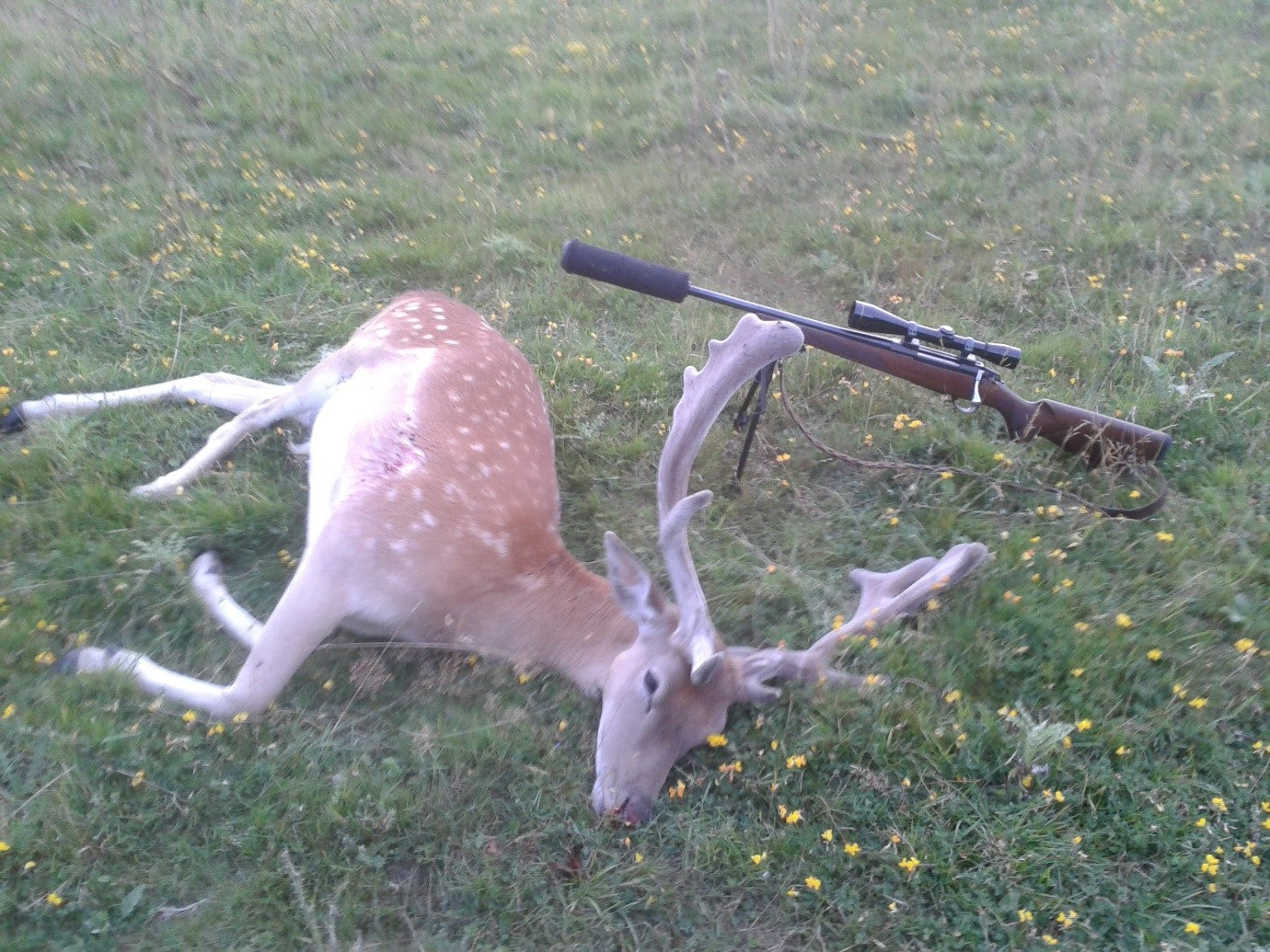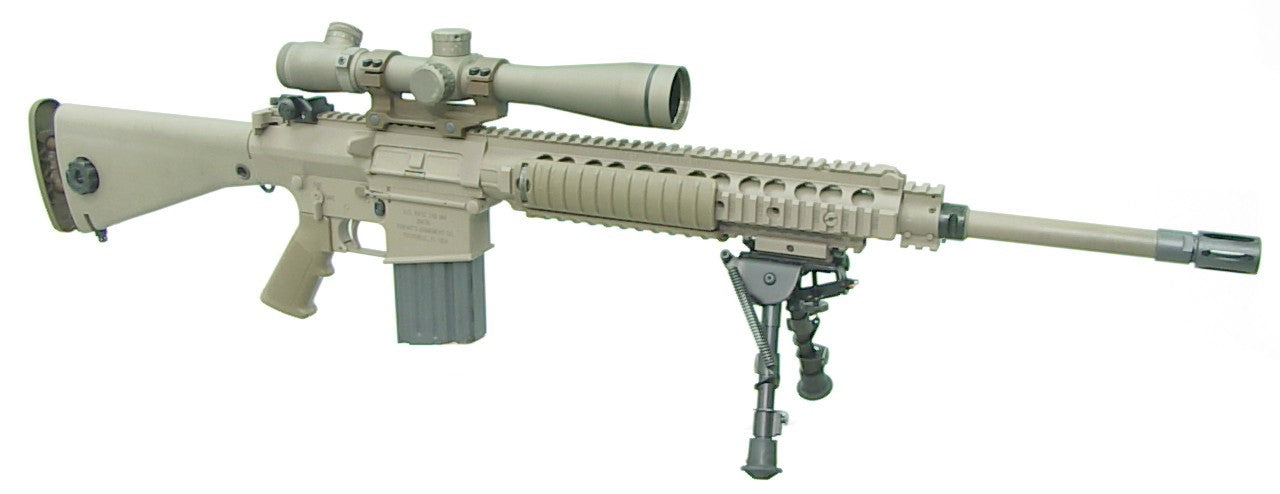I don’t know any firearm lover who would say they didn’t want to improve their shooting. And there is one thing that can really help with your accuracy and consistency in the field. That is a bipod. I would never consider heading out into the field without one fitted to my rifle.
Article content
WHY A BIPOD?
Those of you who shoot a lot will understand that while there are techniques to aid accurate shooting from an unsupported standing position. These techniques are really only applicable in competition shooting where certain disciplines prohibit firing from a rested position. When using firearms in the field or combat, being able to rest your rifle either firing from a prone position or using a tree or other similar support not only provides a more stable base to shoot from but also a better cover and concealment from your quarry or the enemy.
Make your shooting practice more efficient and fun with our exclusive shooting targets. Download now for FREE!
Having a bipod means you permanently have a rest attached to your firearm, ready to deploy at a moment’s notice. There will be no need to find a tree or another support to lean against. It also lifts the muzzle of your rifle and supports the fore end in the prone position. That’s not to say that you shouldn’t practice shooting from an unsupported position. You need to become familiar with that as well, but the supported shot is always going to be more accurate and consistent than one that isn’t supported.
If you doubt the added stability provided by a bipod, just try a simple experiment. Turn the magnification on your scope up as much as you possibly can. Now, look through it at a target without a rest. Even in a prone position without support, such as a bipod for the fore end, you will see a lot of movement through the scope. If you have a powerful scope, up around 12x magnification or more, you will even be able to detect your pulse in the movement of the scope. Now try again with a bipod. It won’t completely cancel out all that movement, but it will make a huge difference.
I would never go into the field to hunt without a bipod, it really does make that much difference.

Bipods make it really easy to stand your rifle next to your latest trophy too.
CHOOSING A BIPOD
Bipods come in various shapes and sizes: some features are more important than others and some are absolutely vital. Consider the following features and functions of your bipod:
- First, the legs of the bipod must fold. There are some very cheap clip-on bipods that can attach directly to a barrel. Avoid these like the plague. Many of them don’t have folding legs, which means they tangle up on everything as you move around through undergrowth. They are often not robust enough, and as they attach directly to the rifle barrel, they can interfere with the harmonics of the barrel and negatively affect accuracy.
-
Make your shooting practice more efficient and fun with our exclusive shooting targets. Download now for FREE!
Your bipod should attach to the furniture of your rifle, on a sporting firearm this normally means attaching it to the front QD (quick detachment) stud where your rifle sling would normally attach. Don’t worry, it doesn’t mean you can’t attach the sling as most bipods allow the sling to be attached directly to them. Make sure your chosen bipod supports this as you don’t want to sacrifice the sling, especially if you have to hike long distances with your weapon.
-
Bipods can also attach to weaver and Picatinny rails, which would be a normal solution for attaching a bipod to a tactical firearm. There are also bipod options that include an integrated bipod within a fore-grip for tactical firearms.
-
A bipod that features a swivel makes tracking targets with your rifle easier as even with the bipod legs firmly rested. The swivel will allow you to move the firearm without the legs jumping and juddering, trying to keep up with the path of the moving barrel. The swivel also allows for maintaining a level sight picture even if the bipod legs are on uneven ground.
- A degree of adjustment in the legs is also important to make sure you can adjust the height of the fore-end to suit your position and body. You don’t want to have the fore-end too high off the ground as you will have to adopt a natural shooting posture. You would have to support your chest and head high up with your elbows, which won’t be as stable as a more ‘ground-hugging’ posture. Some bipods offer many points of adjustment while others just two, it’s up to you to decide how much adjustment you require. I find two settings normally fine though. I have an extra-long bipod fitted to my hunting rifle, allowing me to shoot comfortably from prone at its short setting, and to sit or kneel behind the rifle when fully extended. As I often shoot over very flat terrain, it is very helpful as taking a prone position often means my target is obscured behind the low growth of weeds and even tall grass. Sitting behind the rifle puts me in a much better position for a clear shot.
FITTING A BIPOD

A Bipod fitted to a picatiny rail on an M110 Semi-Automatic Sniper System.
Image Source: Knight’s Armament Company
QD studs or weaver rails are the normal way of securing a bipod to your firearm. Any bipod which connects directly to a barrel should be avoided, as I said earlier. There will be more specialised bipods and even tripods for automatic weapons used in the sustained fire role.
Standard bipods attach to a QD stud with an adjustment screw that tightens a pair of metal ‘pincers’ onto the QD stud with a small stud that engages with the hole in the QD stud to make it very secure. Likewise, weaver mounted bipods tighten up around the standard weaver rail on your weapon.
Make sure that when they are attached and folded, they do not interfere with the operation of the firearm. For example, make sure the legs, when folded don’t interfere with the release and reloading of a magazine or with other accessories, such as lights attached to your rifle. Also, consider the noise of deploying or folding your bipod legs. Make sure they don’t bang against your moderator or that when you release the legs that they don’t flick out with a loud noise. For this reason, neoprene moderator sleeves and rubber feet on your bipod are a must.
USING A BIPOD
Folding bipods can easily be deployed while on the move with just one hand and provide immediate support for your firearm. With the fore-end supported, it leaves you a free hand allowing you to work the bolt of a bolt action rifle without having to adjust your position or sight picture or make other adjustments with your now free hand.
While firing, I would suggest you use that free hand to brace the stock of the rifle against your shoulder. This adds even more stability, and your weapon is now effectively supported on a tripod with your fist and forearm braced under the stock. This is an exceptionally stable shooting position and can really improve your consistency.
Besides, it reduces the fatigue of having to support heavier weapons while firing or waiting in a firing position. A bipod is an absolute must for rifles and larger weapons. I never go into the field without one.

